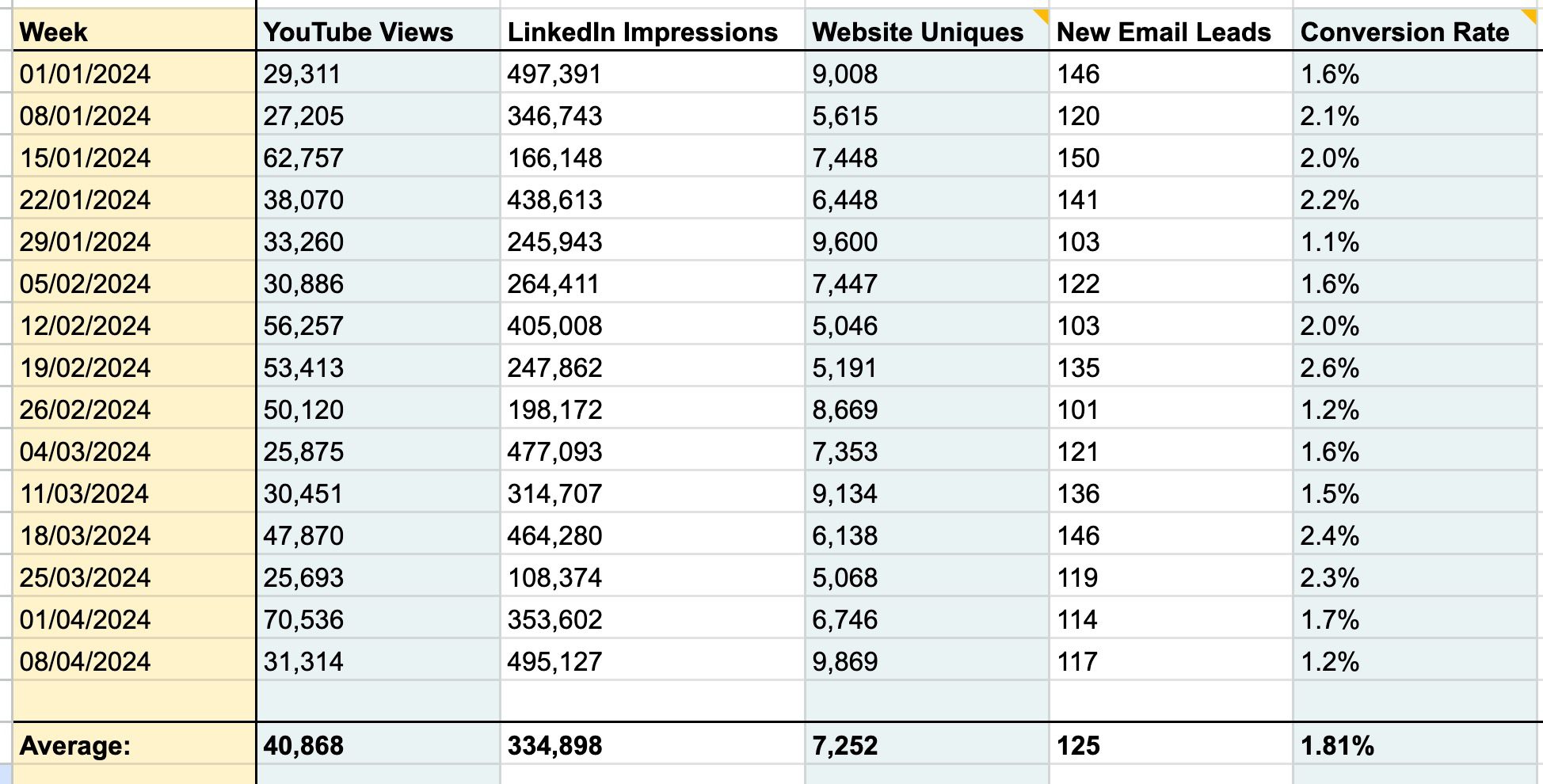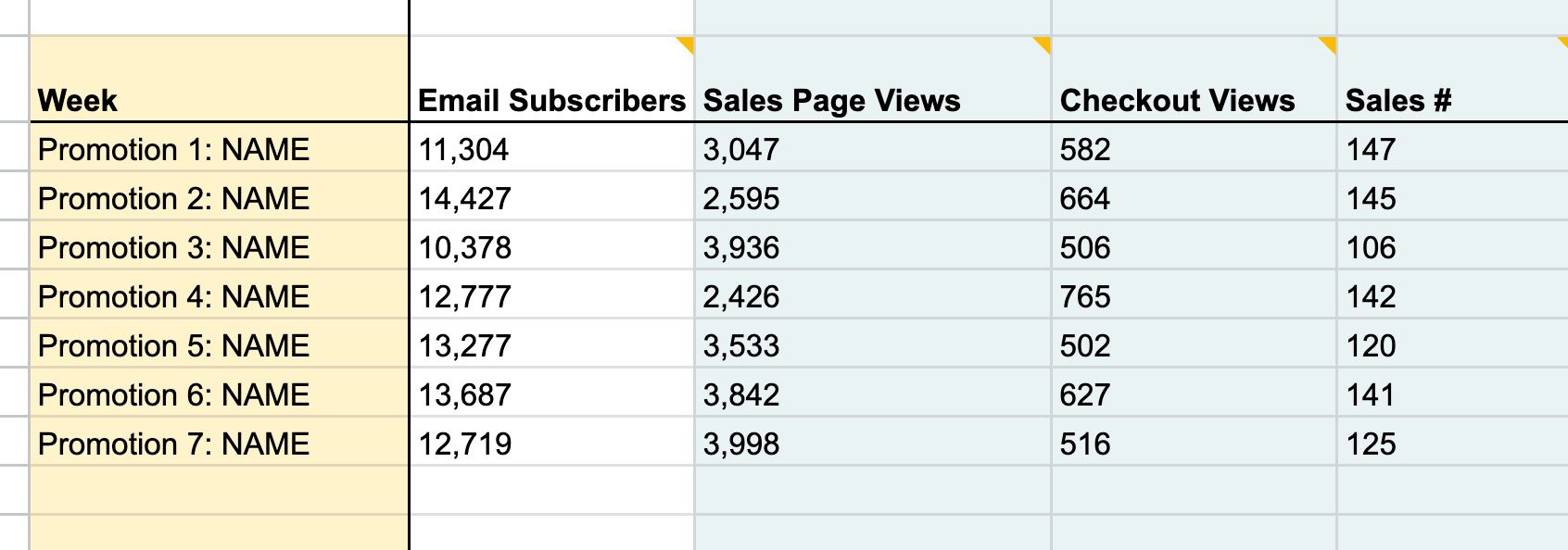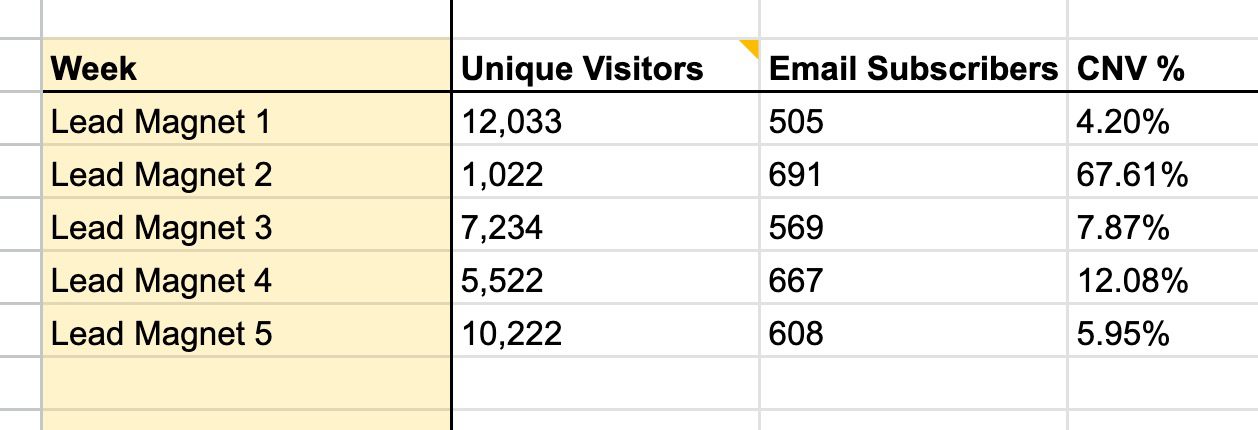From: Olly Richards21st June 2024Hobbitshire: What good is the warmth of summer, without the cold of winter to give it sweetness?
Today, I’ll be giving you a complete primer on the key metrics you should track in your online business.
I’ve recorded a detailed video that walks you through what to track, step-by-step:
- Basic KPIs (Key Performance Indicators)
- Email promotion performance
- Lead magnet conversion rates
I’ll also give you a spreadsheet template you can use to start tracking your own stats right away.
Online businesses live and die by the numbers.
If you want to make more money, tracking the right metrics is essential.
I’ll break it all down for you in simple terms and give you an easy system you can put into action immediately.
I highly recommend you watch the video walkthrough version of this, but the written version is also available below.
Here’s the template spreadsheet for you:
https://docs.google.com/spreadsheets/d/1XqMUxsn9DGjHnbH1Gh6fjJDR_F9JnQ5X9Uju6HXbvsw/edit?usp=sharing
(Just make a copy and use freely.)
Let’s dive in!
Note:
Tracking stats is like pandora’s box, and there is such a thing as “death by stats”.
What I’m giving you here is the absolute basics, aimed primarily at people who are not currently tracking anything properly.
There’s far more that you could track, but I’ll leave that for another day.
Part 1: Basic KPIs
If you track nothing else, you must track these numbers weekly:
- Traffic from main sources (e.g. YouTube views, LinkedIn impressions)
- Unique website visitors
- New email leads
- Overall lead conversion rate (email leads / unique visitors)
To calculate your overall lead conversion rate, divide your total new email leads by your website’s unique visitors. For example:
- 9,600 website visitors
- 103 email leads
- Conversion rate: 1.1% (103 / 9,600)
Is 1.1% good or bad?
The answer, is of course, it depends.
But park that for now – just focus on gathering the numbers.
Useful questions to ask:
- What is my overall conversion rate?
- What tests can I run to increase it?
- Do I have fresh lead magnet ideas to test?
Email subscriber growth is one of the most important metrics in your business, so the related KPIs weekly will help you make smarter decisions.
Part 2: Email Promotion Performance
For most education businesses, the majority of revenue comes from email – either from evergreen funnels or specific promotions.
So it’s critical to track the performance of those promotions.
Here are the key numbers to track for each promotion:
- Promotion name
- of email subscribers who received it
- Unique visits to sales page
- Clicks to checkout page
- Total sales
- Total revenue
Then, if you want to go a layer deeper:
- Sales page conversion rate (sales / unique visits)
- Clickthrough rate: sales page to checkout
- Checkout page conversion rate
- Revenue per email subscriber
- Order bump conversion rate
- Upsell conversion rate
- Conversion to overall email list
While this looks like a lot, the discipline of collecting this data is extremely important.
Over time, it allows you to run more profitable email campaigns.
Questions to ask:
- Which offers generated the highest $ per subscriber?
- Which order bumps and upsells converted best?
- How can I optimise high-converting promos?
Part 3: Lead Magnet Conversion Rates
For most online education businesses, lead magnets are the primary way to convert traffic into email subscribers.
So it’s crucial to track their performance.
Track the following for each lead magnet:
- Lead magnet name
- Unique visitors
- New email leads
- Conversion rate
You want to track unique visitors, not just any hits, to understand how many individuals are converting.
Aim for a minimum 30% conversion on lead magnets, up to 70-80% for high-performing ones. For example:
- Lead Magnet 1: 3% conversion (bad)
- Lead Magnet 2: 67% conversion (great!)
- Lead Magnet 3: 4% conversion (bad)
In this scenario, you would consider cutting 1 and 3, and plastering 2 all over your business.
(You’ll double the business overnight!)
But…
You’ve got to be tracking these numbers in order to get this insight.
Questions to ask:
- Which lead magnets are performing best?
- What tests can I run to improve underperformers?
- Should I cut any altogether?
- Can I expand usage of high-performers?
The Bottom Line
Whether you crunch these numbers yourself or hire a VA to do it, tracking your core metrics weekly is the foundation for scaling your online education business.
The discipline of gathering this data and asking smart questions will lead to better decisions, new breakthroughs, and ultimately, increased revenue.
Yes, it takes work. But as you’ve seen here, it’s 100% worth it.
Focus on the process, stay consistent, and watch your business grow.
Once again, I recommend you watch the video to properly understand this:
And here’s your spreadsheet template:
https://docs.google.com/spreadsheets/d/1XqMUxsn9DGjHnbH1Gh6fjJDR_F9JnQ5X9Uju6HXbvsw/edit?usp=sharing
By the way…
Know any online business owners who would be interested in learning to track properly?
Please hit “forward” and send this on to them!
Until next week.
Namaste,Olly
CASE STUDY: Blueprint Of A $10m Online Education Business:
- Business model blueprint
- Product ecosystem
- Team structure
- Evergreen sales strategy
- And much more
Join my free newsletter for online educators and I’ll send you the case study immediately…
[tcb-script async=”” data-uid=”10c2395222″ src=”https://skilled-trailblazer-6490.ck.page/10c2395222/index.js”][/tcb-script]
We will protect your data in accordance with our data policy!







